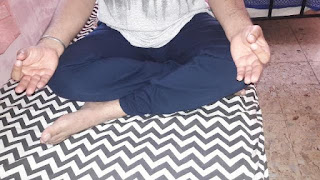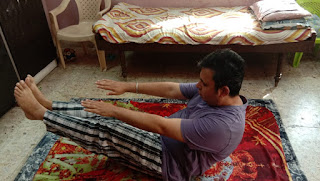Health Benefits of Gyan Mudra
 |
| Health Benefits of Gyan Mudra |
Gyan Mudra is often used while meditating. It is one of the most important mudras that promote physical and mental health.
It is also called as Chin Mudra. In Sanskrit chin or cin means “consciousness”. Mudra means “gesture” or “seal”. So gyan mudra may be translated to mean “gesture of consciousness” in English.
How to perform Gyan Mudra
To do Gyan Mudra bring the tips of the thumb and index fingers together and form a circle. Sit in a cross legged position. Keep your hands on the thighs with elbows bent or straight. Remaining three fingers are stretched and palms are facing upwards.
It can be done for 45 minutes at a stretch to gain maximum benefits or three rounds of 15 minutes each. It is advisable to do this mudra at same time every day.
Gyan mudra is used in meditative yoga poses. It is used in certain breathing techniques including nadi shodhana pranayama and ujjayi pranayam. It can be practiced while in padmasana also.
This mudra represents the union of self with the universe, the unification of one’s soul and the supreme soul.
The thumb symbolizes the supreme soul and the index finger refers to the practicioner’s soul.
The middle finger personifies “purity” and “true wisdom” (Sattva).
The ring finger personifies “passion” and “darkness” (Rajas).
The little finger personifies “lethargy” and “darkness” (Tamas).
Gyan mudra is a great representation of the yogic philosophy of evolving from the state of ignorance to wisdom, from darkness to enlightenment.
Benefits of Gyan Mudra
Practicing Gyan mudra helps the practicioner to eliminate negative forces and focus on attaining true knowledge.
- It promotes proper flow of prana.
- It cures indigestion.
- It addresses sleeping disorders.
- It improves focus.
- It enhances memory power.
- It not only relieves stress and anger but also prevents it.
- It promotes a sense of balance.



Comments
Post a Comment